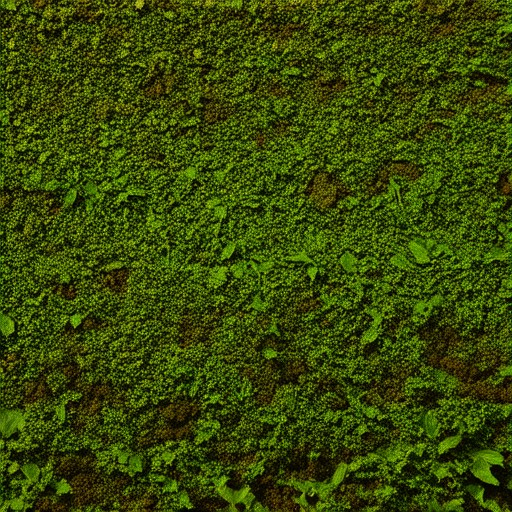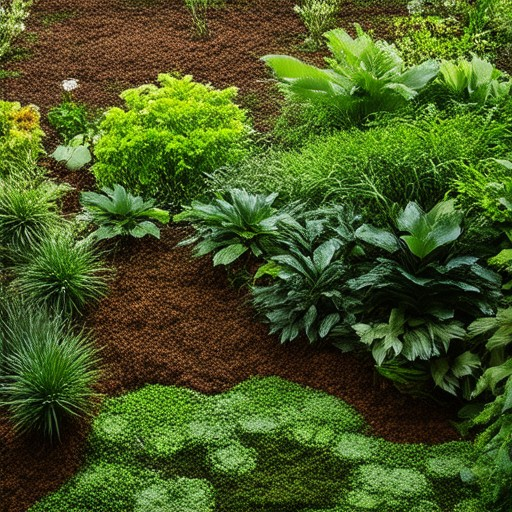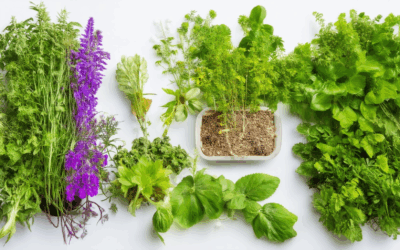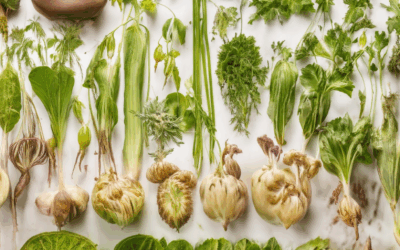Did you know that the health of your soil directly impacts the productivity and sustainability of your garden? By using eco-friendly methods, you can enhance soil structure, promote plant growth, and contribute to a healthier planet. This guide explores natural and sustainable ways to amend soil, ensuring your garden thrives while being kind to the environment. Whether you’re a seasoned gardener or new to eco-friendly practices, this article offers practical advice and expert tips to help you achieve healthy, productive soil and enjoy a bountiful harvest year after year.
Key Takeaways
– Amend soil affordably by using organic materials like compost and manure.
– Create free compost from kitchen scraps and yard waste for eco-friendly amendments.
– Adjust soil pH with lime or gypsum for healthier plant growth.
– Avoid adding sand to clay soil; use organic amendments instead for better structure.
– Boost soil fertility naturally with organic matter and minerals like rock phosphate.
How Do You Amend Soil Naturally?
To amend soil naturally, consider these effective methods that enhance soil health and fertility while promoting sustainability:
1. Incorporate Organic Matter
Adding organic matter like compost, aged manure, or leaf mold improves soil structure and nutrient content. This can be done during planting or as a top dressing.
2. Use Mulch
Apply organic mulches such as wood chips, straw, or grass clippings to retain moisture, suppress weeds, and recycle nutrients naturally.
3. Practice Cover Cropping
Plant nitrogen-fixing cover crops like clover or vetch to enrich the soil and prevent erosion. These crops are easily removed before planting.
4. Add Lime or Sulfur
Adjust soil pH by applying lime if the soil is too acidic or sulfur if it’s too alkaline. Both amendments are natural and long-lasting.
5. Rotate Crops
Rotate crops to maximize nutrient uptake and disrupt pest cycles. This method enhances soil health and prevents depletion of essential nutrients.
Learn More About Natural Soil Amending Techniques
Explore detailed guides and resources on composting and cover cropping to further improve your soil’s health.
Best Organic Soil Amendment
The best organic soil amendment depends on your specific needs and goals, but several high-quality options stand out for improving soil health, fertility, and structure. Here’s a breakdown of the most effective organic amendments:
- Composted Cow or Poultry Manure: Well-composted animal manure is rich in nutrients, organic matter, and microorganisms. It enhances soil structure, improves water infiltration, and provides essential nutrients like nitrogen, phosphorus, and potassium. Apply 1-2 inches of compost annually or as needed, working it deeply into the soil.
- Leaf Mold Compost: Leaf mold is an excellent organic amendment because it breaks down slowly, releasing nutrients over time. It improves soil aeration, moisture retention, and root penetration. Incorporate 1-2 inches of well-rotted leaf mold into your soil annually.
- Fish Emulsion: Fish emulsion is a liquid fertilizer that’s easy to apply and quickly provides micronutrients like zinc, iron, and B-vitamins. It’s ideal for container gardens and plants that benefit from frequent feeding. Dilute it according to package instructions and apply every 4-6 weeks during the growing season.
- Seaweed Extract: Seaweed extract is rich in amino acids, minerals, and trace elements. It acts as a natural growth promoter and soil conditioner. Apply 1-2 tablespoons per square foot of soil or mix it into a compost tea for a concentrated solution.
- Wood Chips or Sawdust: Wood chips or sawdust from untreated trees add carbon to the soil, improving its organic matter content. They also promote microbial activity and reduce soil compaction. Incorporate 1-2 inches of wood chips into rows or beds and let them sit for several months before planting.
- Green Manure: Green manures like clover, vetch, or comfrey are living mulches that enrich the soil as they grow. They fix nitrogen, improve soil structure, and suppress weeds. Plant them in fall or winter and chop them down in spring before new growth begins.
- Rock Dust: Rock dust adds essential minerals like calcium, magnesium, and silica to the soil. It improves plant resistance to diseases and pests. Apply 1-2 inches of rock dust around plants or mix it into potting mixes.
Application Tips
When applying organic amendments, always test a small area first to ensure compatibility with your soil. Incorporate amendments deeply into the soil to avoid burning plants. For best results, combine amendments with compost to enhance their effectiveness and improve soil aeration.
By using these amendments thoughtfully, you can create a nutrient-rich, healthy soil environment that supports robust plant growth and sustainability in your garden.
What Are Organic Amendments of Soil?
Organic amendments are natural materials added to soil to enhance its health, structure, and fertility. These amendments are rich in carbon and provide essential nutrients, improving soil properties for better plant growth.
Types of Organic Amendments
- Compost: A fermented mix of organic waste materials that improves soil structure and nutrient content.
- Mulch: Materials like wood chips or leaves that protect soil from erosion and retain moisture.
- Green Manure: Plants grown specifically to be turned into the soil, adding nitrogen and organic matter.
- Fish Emulsion: A nutrient-rich liquid amendment derived from fish byproducts, providing essential minerals.
- Cover Crops: Plants sown to protect soil from erosion and enrich it with organic matter before planting crops.
Benefits of Organic Amendments
- Improves soil structure and water infiltration.
- Enhances microbial activity in the soil.
- Provides long-term nutrient release for plants.
- Reduces reliance on synthetic fertilizers.
- Supports sustainable and eco-friendly gardening practices.
Why Use Organic Amendments?
Organic amendments promote soil health, making gardens more productive and sustainable. By adding organic matter, you contribute to a healthier ecosystem that supports beneficial microorganisms and reduces the need for chemical inputs.
Choosing the Right Amendment
Select amendments based on your specific needs. For example, compost is ideal for improving soil organic matter, while cover crops are effective for erosion control. Consider factors like your soil type, climate, and intended use to choose the best amendment.
Application Tips
- Apply amendments in appropriate amounts based on your soil test results and crop requirements.
- Integrate amendments into the soil thoroughly to ensure they decompose properly.
- Apply amendments at least once a year to maintain soil health and fertility.
By incorporating organic amendments into your gardening routine, you can create a more vibrant and productive garden while promoting sustainable practices. Explore more tips and guides on composting and other sustainable gardening techniques on Old Seed.
The Cheapest Way to Amend Soil
To amend soil cheaply, focus on using organic and inorganic materials that are readily available and cost-effective. Here’s a step-by-step guide:
- Compost : Incorporate compost into your soil to boost fertility and structure. Look for local sources or consider making your own compost from kitchen scraps and yard waste.
- Manure : Apply aged horse manure for nitrogen enrichment. Check local farms or garden centers for bulk purchases, which are often cheaper than store-bought options.
- Leaf Mold : Mix in leaf mold for organic matter and slow-release nutrients. It’s nutrient-dense and helps retain moisture.
- Lime or Sulfur : Adjust soil pH with lime (calcium carbonate) or sulfur. These are widely available at garden centers and can be applied in moderate quantities.
- Gypsum : Improve soil structure with gypsum, which enhances water infiltration and root growth. It’s generally inexpensive.
- Synthetic Fertilizers : Use chemical fertilizers sparingly as they are cheaper but provide only temporary nutrients. Combine with organic amendments for balanced nutrition.
Apply these amendments according to recommended dosages to avoid harming plants. Consider buying in bulk and checking for seasonal discounts to minimize costs further.
Amending Soil for Free: A Step-by-Step Guide
To amend your soil effectively, follow these steps to enhance its fertility and structure without spending a dime:
- 1. Add Compost: Create a compost pile using kitchen scraps and yard waste. Over time, this will enrich your soil with essential nutrients and improve its structure.
- 2. Incorporate Leaf Mold: Collect fallen leaves from your yard and allow them to decompose into leaf mold. Mix this into your soil to boost organic matter and nutrients.
- 3. Adjust pH with Lime or Gypsum: If your soil is too acidic, mix in crushed limestone (lime) to raise the pH. For better soil structure, add gypsum (calcium sulfate) to improve soil aggregation.
- 4. Enhance Magnesium Levels with Epsom Salts: Dissolve epsom salts in water and spray or water the plants to provide magnesium, which supports healthy growth and nutrient absorption.
- 5. Add Rock Phosphate for Phosphorus: Incorporate rock phosphate to increase soil phosphorus levels, which promotes strong root systems and abundant blooms.
Application Tips:
- Test your soil pH before amendments to ensure you’re targeting the correct levels.
- Apply amendments evenly across your garden or planting beds.
- Work the amendments deeply into the soil using a shovel or tiller for better integration.
- Water thoroughly after applying amendments to help them settle into the soil.
By using these free methods, you can significantly improve your soil’s health and productivity, ensuring thriving plants and a more productive garden.
Will adding sand to clay soil help?
Adding sand to clay soil does not significantly improve its properties. While sand may seem like a solution to clay soil challenges, it often fails to address the primary issues associated with clay. Here’s why:
- Structure and Adhesion: Sand has larger particle sizes compared to clay, which can cause the sand to separate from the clay rather than integrate uniformly. This separation leads to soil that remains poorly structured and prone to compaction.
- Water Retention and Drainage: Clay soil naturally retains water longer, which can prevent drought issues. However, excessive water retention can lead to waterlogging. Sand may improve drainage slightly, but the effect is minimal when mixed with clay.
- Plant Requirements: Different plants have varying soil preferences. Some plants thrive in well-draining, loamy soil rather than sandy textures. Adding sand may alter the soil structure in ways that are counterproductive to certain plant species.
- Organic Matter Amendments: Organic matter, such as compost, is a more effective amendment for improving clay soil. It enhances soil structure, promotes microbial activity, and improves overall soil health without the drawbacks of sand addition.
Therefore, adding sand to clay soil is generally not recommended. Instead, focus on incorporating organic amendments and maintaining proper soil structure to achieve healthier, more productive soil conditions.








0 Comments